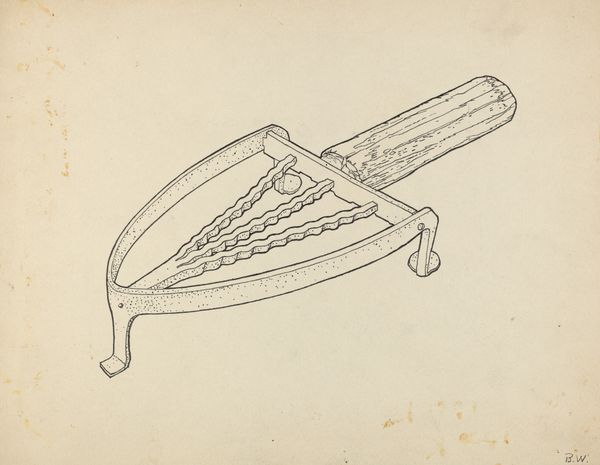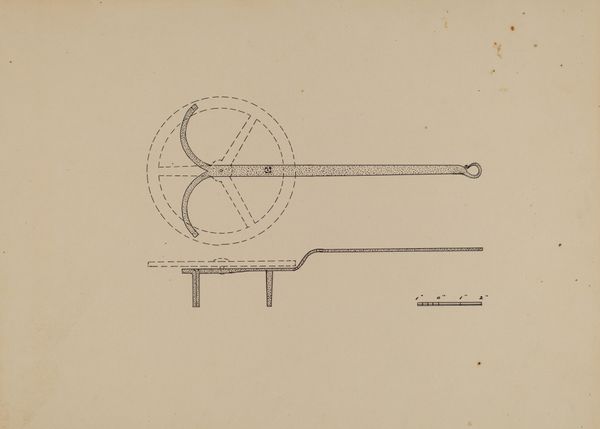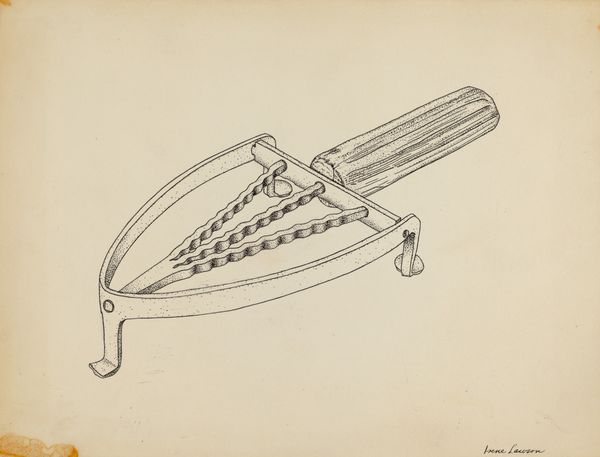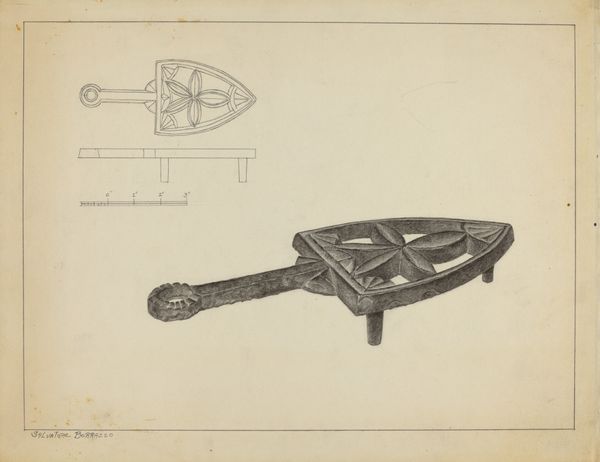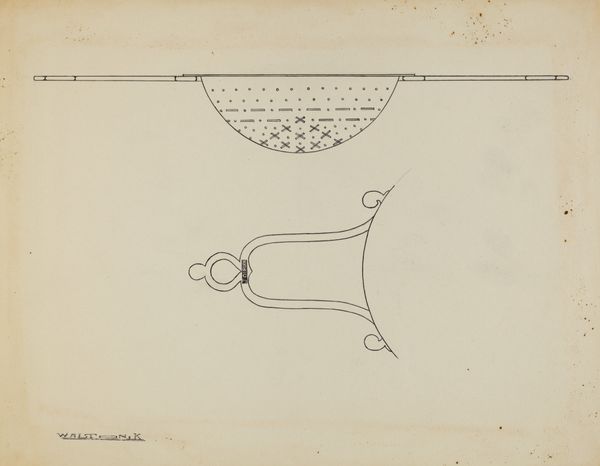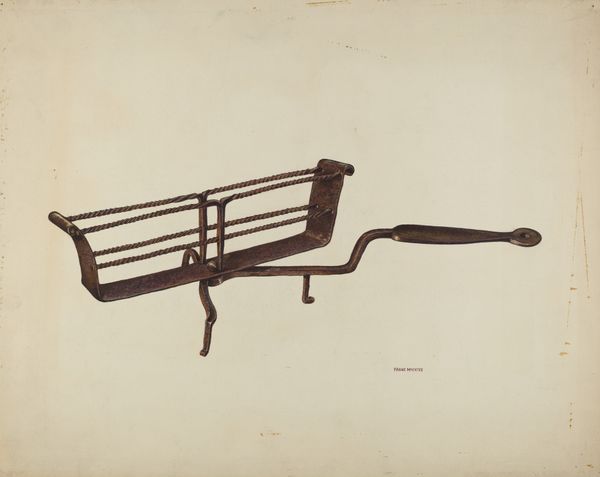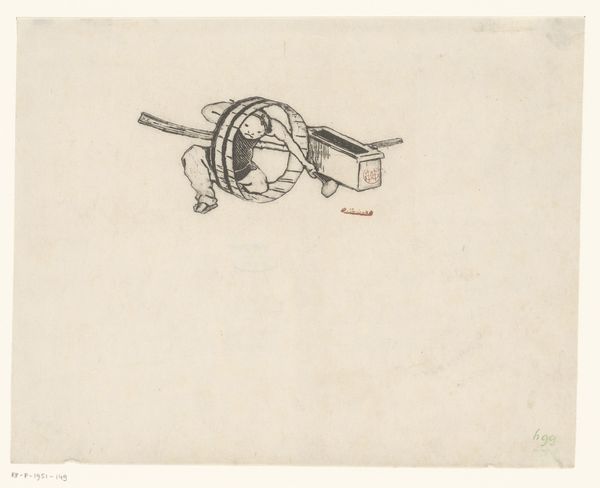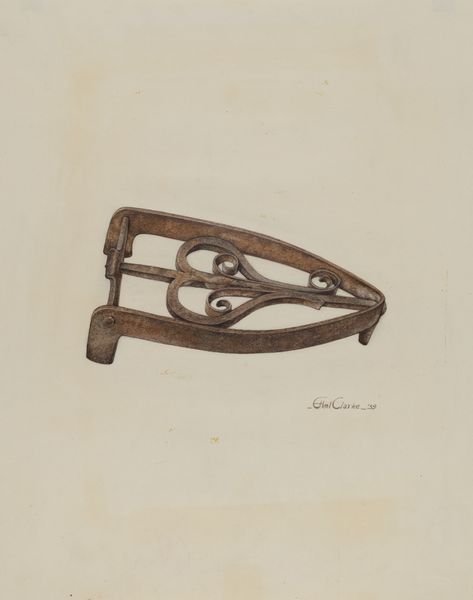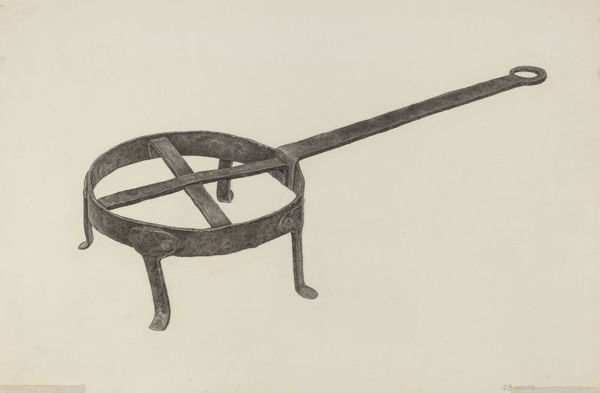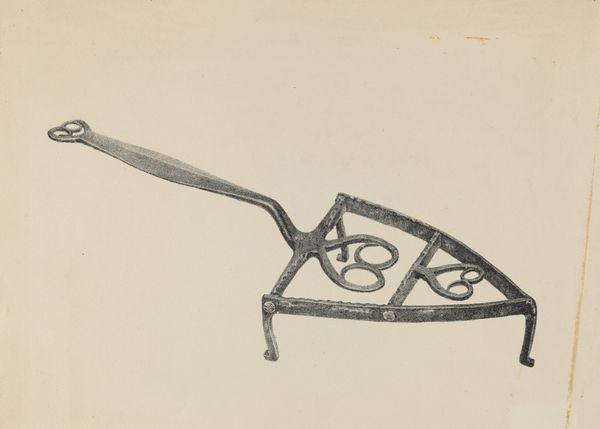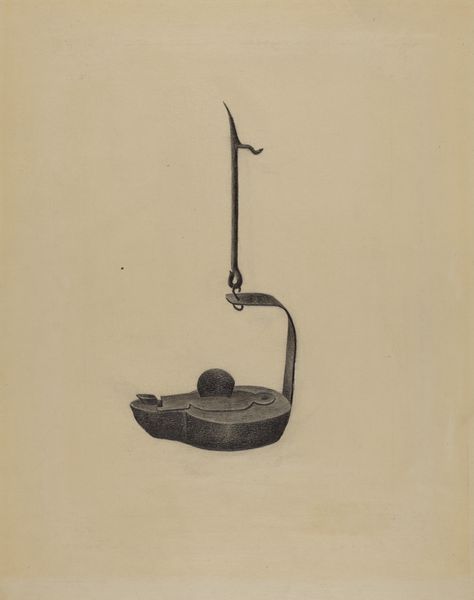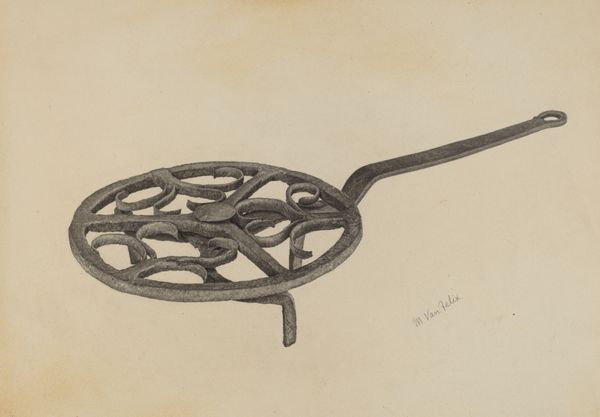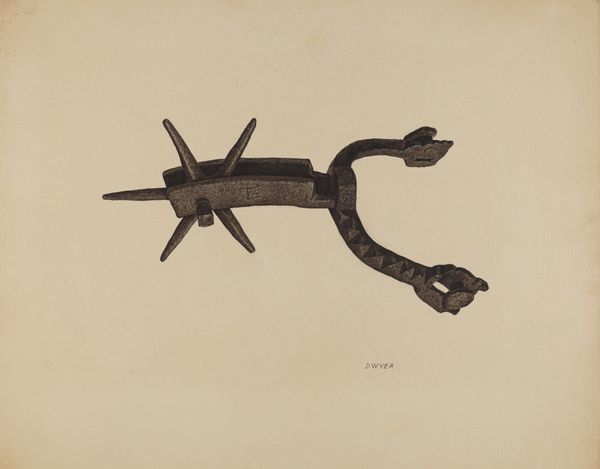
drawing, paper, ink
#
drawing
#
paper
#
ink
Dimensions: overall: 23.2 x 28.9 cm (9 1/8 x 11 3/8 in.) Original IAD Object: 5 1/4" in diameter; 9 1/8" long; 2" high
Copyright: National Gallery of Art: CC0 1.0
Editor: Here we have "Trivet," an ink on paper drawing from around 1939 by Irene Lawson. It’s quite a simple drawing, a functional object rendered with such care. What strikes me is the quietness of it. How do you interpret this work? Curator: That "quietness" you describe speaks volumes. Consider the context: 1939, on the cusp of global upheaval. Domestic objects, often relegated to the margins, take on a new significance. Lawson, a woman artist, chooses to depict a humble trivet, subtly challenging the hierarchies of artistic subject matter, perhaps a deliberate act of reclaiming value in the everyday. Editor: I hadn’t thought about it that way. The trivet as a symbol, maybe, of quiet resilience? Curator: Exactly. The choice of medium too - simple ink on paper. Is this a comment on resourcefulness? On finding beauty in the essential? Consider also, what labor and identities are historically excluded from art. Editor: So, this seemingly simple drawing actually holds layers of meaning, tied to gender, class, and historical context. What would it have meant for the artist herself? Curator: That’s the key question, isn’t it? How did her identity and experiences shape her choice of subject and her artistic process? And how does that influence our understanding today? Do you see it in a different light now? Editor: Absolutely. It’s not just a drawing of a trivet; it's a statement about value, resilience, and the importance of recognizing marginalized perspectives. I am beginning to grasp the weight of that. Curator: Precisely! The beauty of art history lies in unpacking these layers and allowing art to speak across time, constantly revealing new meaning.
Comments
No comments
Be the first to comment and join the conversation on the ultimate creative platform.
